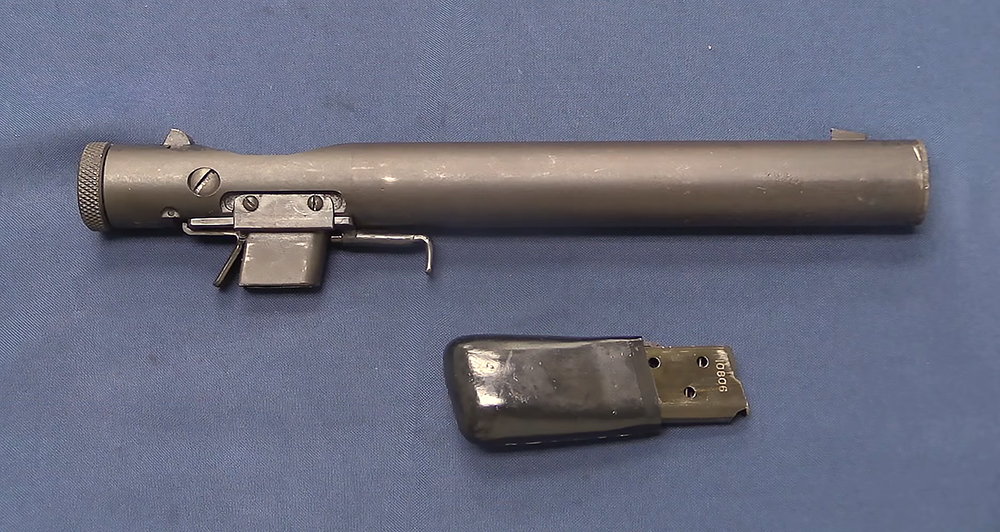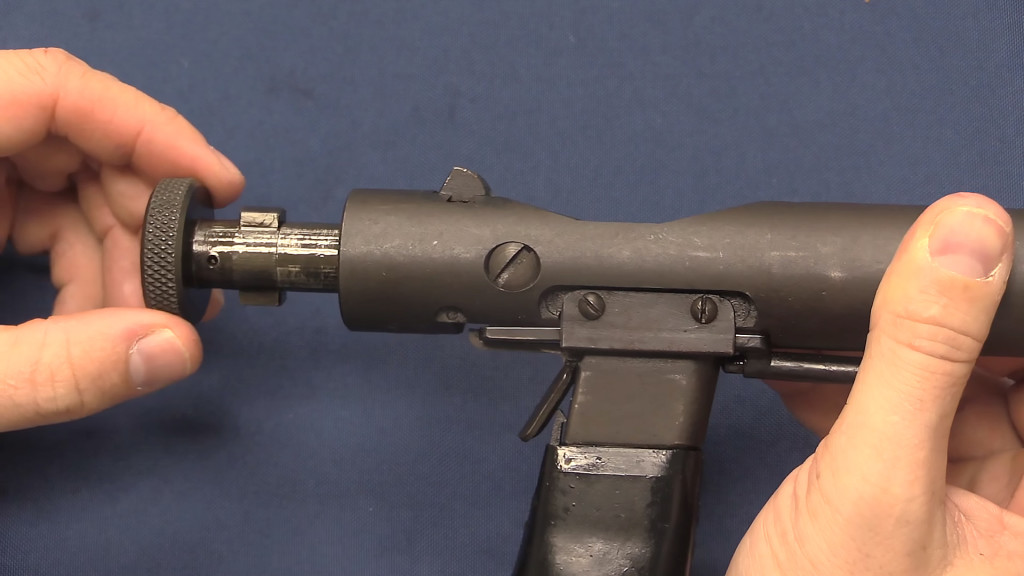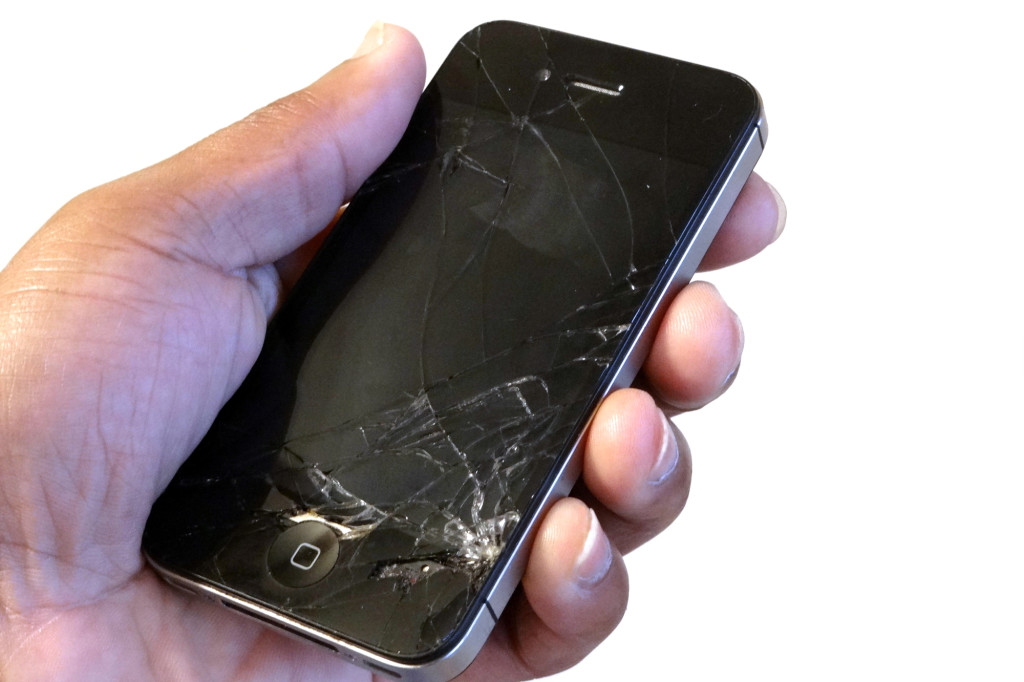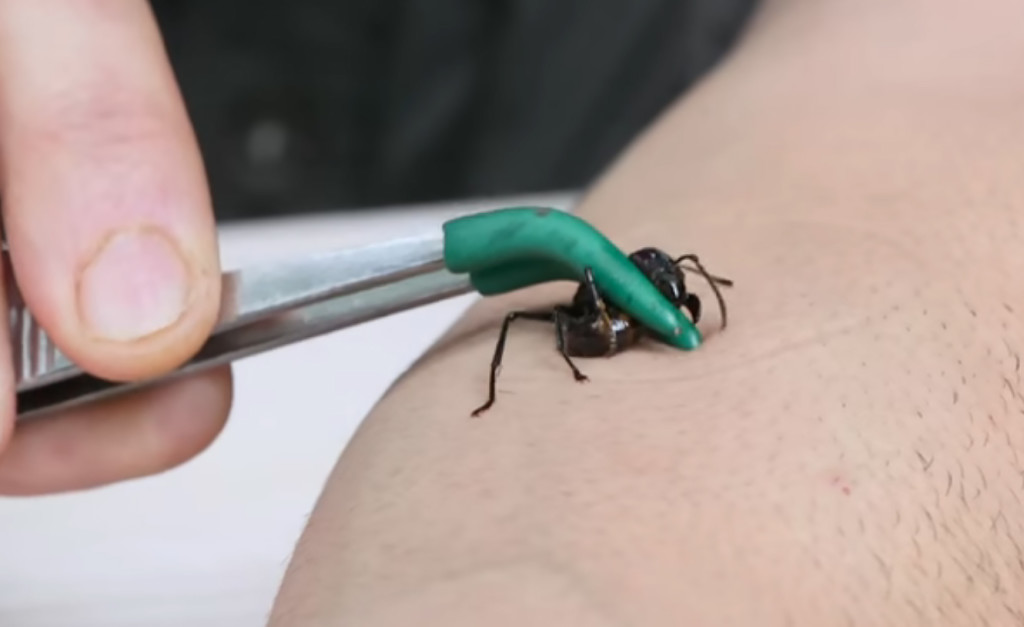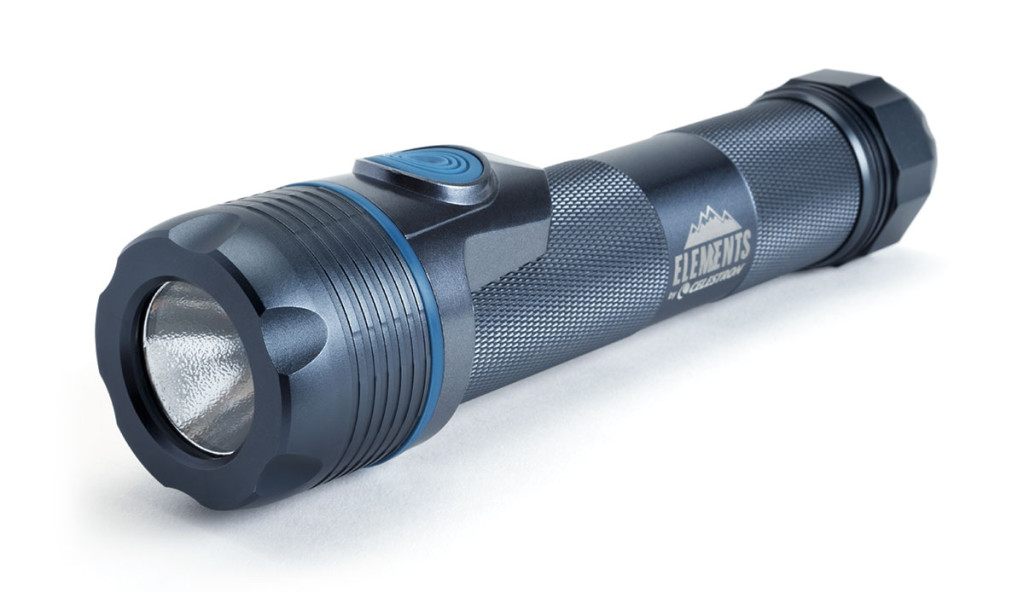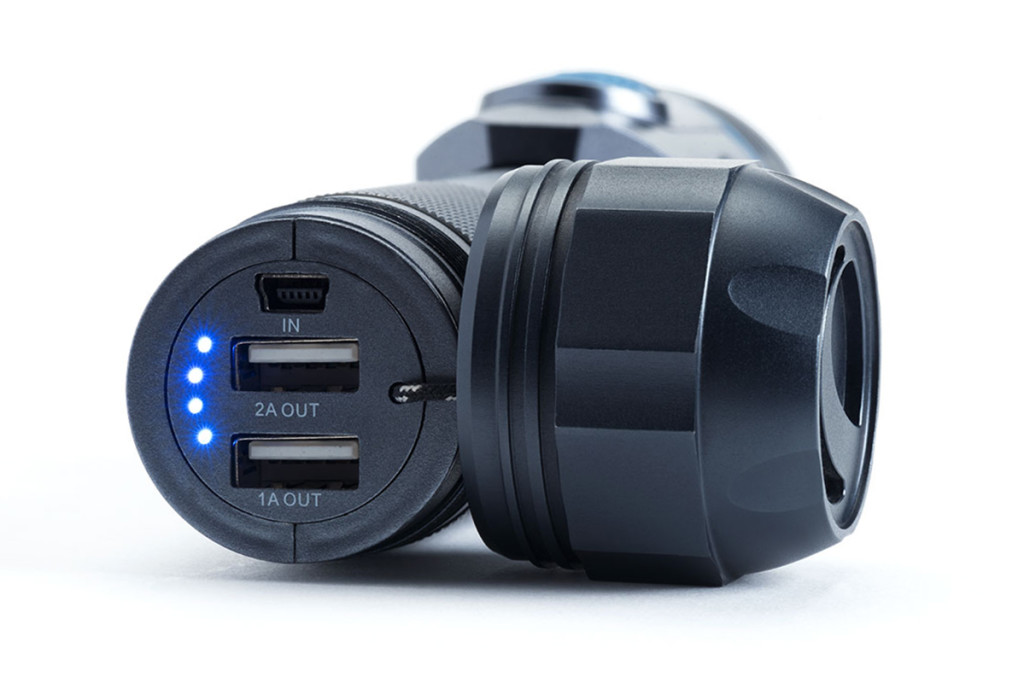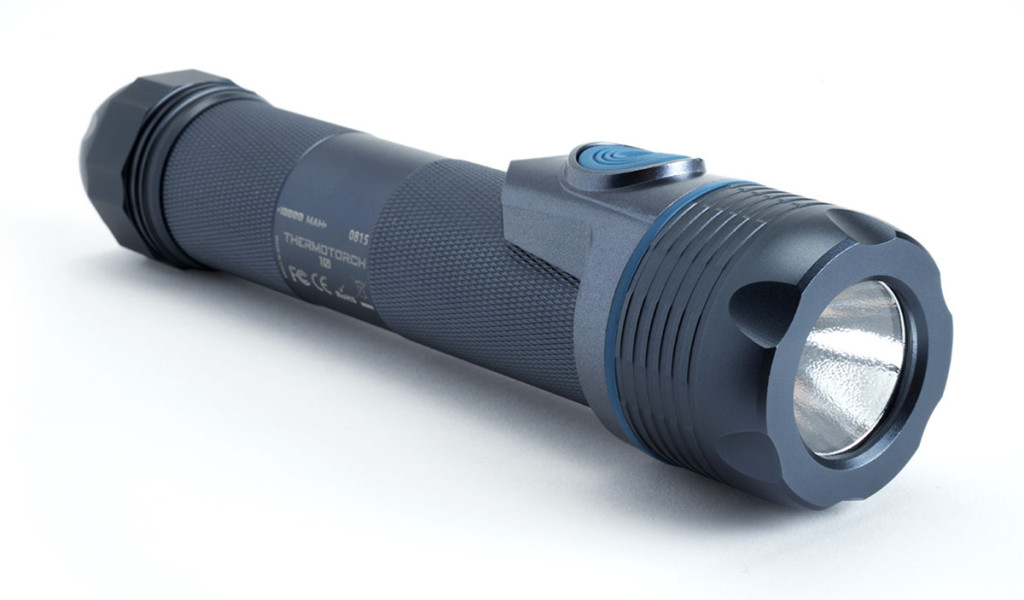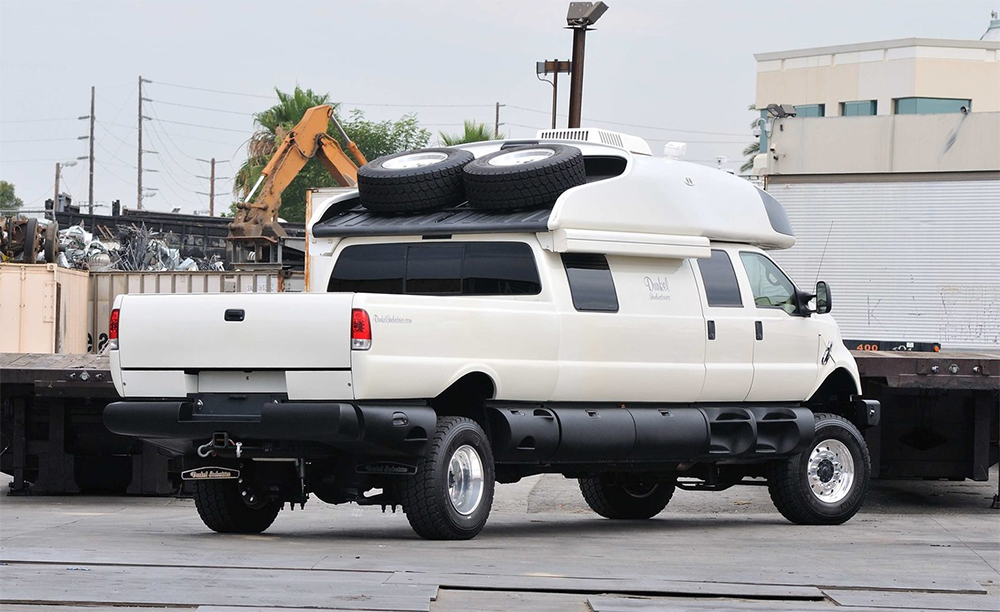In Part I of our Self-Defense Cane series of web-exclusive articles, we discussed why a cane can serve as an excellent self-defense tool — even if you don't need one to walk. This simple hooked stick can be hidden in plain sight due to its discreet appearance, and can be carried in non-permissive environments where more conventional weapons are banned.
Today, we'll address some common mistakes and misconceptions that might make carrying a self-defense cane less effective. For illustration purposes, we'll be referring to the KA-BAR TDI cane we introduced in Part I of our series.
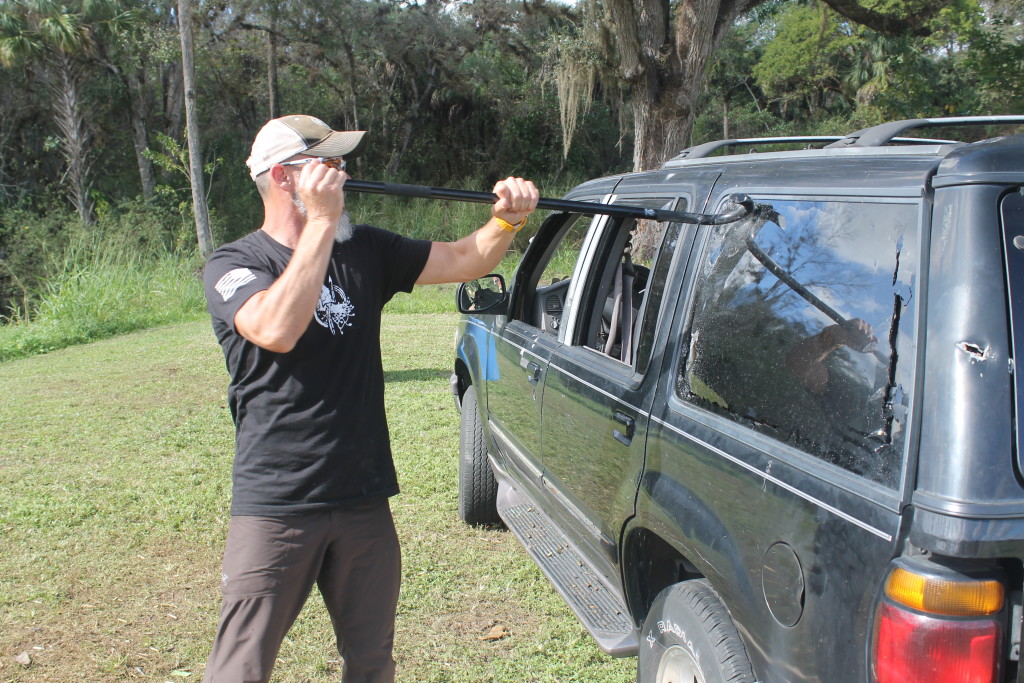
Above: Chris Costa of Costa Ludus smashes SUV glass to clear the way for his pistol and carbine vehicular shooting class in Everglades City, Florida. The KA-BAR TDI aluminum cane crook easily took out the windows and allowed Costa to rake out large pieces of glass, clearing the way for his shooters and keeping his hands free from cuts. The cane had minor scratches. (Photo courtesy of Costa Ludus.)
Without further ado, here are the top 10 rookie mistakes to avoid while carrying a cane for self-defense:
Mistake 1: Assuming One Size Fits All
When fitting the KA-BAR TDI-Self Defense Cane, shorten the shaft gradually. One advantage of the hollow shaft is that the cane’s rubber tip or foot can easily be removed, the cane shaft shortened with pipe cutter or hack saw and the rubber foot replaced. The rubber foot is slightly over-sized for secure surface grip, and a metal washer insert within the tip prevents the tubular cane from cutting through the tip.

Take care to use the cane before you decide to cut it, removing a small ¼-inch amount at one time, while wearing street shoes and practicing with the cane in between cuts. Although the full-length cane can easily be carried by a 6-foot-2 or taller person, actual cane length comes down to personal preference.
Cut too much, and you will stoop while walking with the cane, resulting in poor posture and potential spinal problems. Start by standing straight upright with a slight bend in the elbow while lightly grasping the cane. Avoid cutting the cane based on someone’s hard and fast rules, like having the cane’s highest point at the point of your hip, or the wrist bone. When in doubt, or while training, always err on the side of leaving the cane cut slightly long, to allow for different footwear, declines, inclines, and actual cane usage for walking when injured during your urban bug out.
Mistake 2: Cocking Your Weapon

This phrase is taught to U.S. Marines during the Corp’s Martial Arts Program in Quantico, and refers to the need to avoid telegraphing your moves by drawing the cane rearward before thrusting the cane forward, usually in a two-handed thrust or bayonet style lunge to strike or to parry. There are no shortcuts in training, but even a limited martial arts specialty cane course can prevent the cane carrier from excess motion, and instruct in the art of generating powerful blocks, strikes, counters, and thrusts from a calm and relaxed position through foot movement and rotation of the hips and torso through to the arms. This holds true in tight quarters.
Mistake 3: Overextending
For anyone using the cane to steady their posture during a medical recovery or unsure footing, care must be taken not to overextend on a thrust by leaning too far forward. You can become off-centered by a swing and a miss, opening one to a counter-strike, a cane takeaway, or a trip.
Mistake 4: Freezing
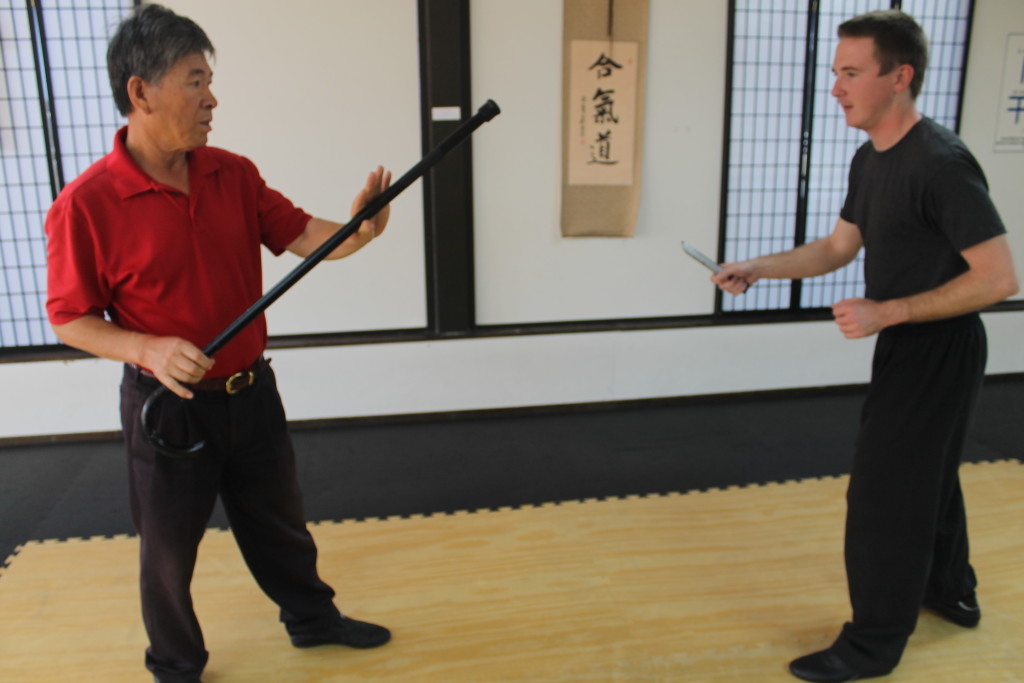
Don’t stand still with the cane cross-chest and allow an assailant to close in and grab it with both hands. If that happens, you may be able to rotate the entire cane down while twisting against the attacker’s grips, using a foot stomp, snap kick, or knee to dominate. As soon as the grip is broken, look for an opportunity to counter or put some distance between you by circling.
Mistake 5: Advertising Your Third Leg

When waiting or standing still at a public bus stop, for example, the cane’s creator, Benner, teaches to keep the cane out of sight to passersby. This is accomplished by closely aligning the cane with his right or left side, or positioning it slightly behind him. If needed, the cane may be brought up, around, or overhead with surprising speed, spinning the cane in a one-handed grip in the crook or hook to fend off an attacker.
Mistake 6: Forgetting Driver Defense Drills

When driving in stop-and-go or bug-out city traffic, keep the cane within reach while driving but first practice defensive moves to prevent entanglement with seatbelts, steering wheels, and passenger side riders. Lean inward, rather than outward of the window and prepare to repel boarders with a straight stab to the throat or face.
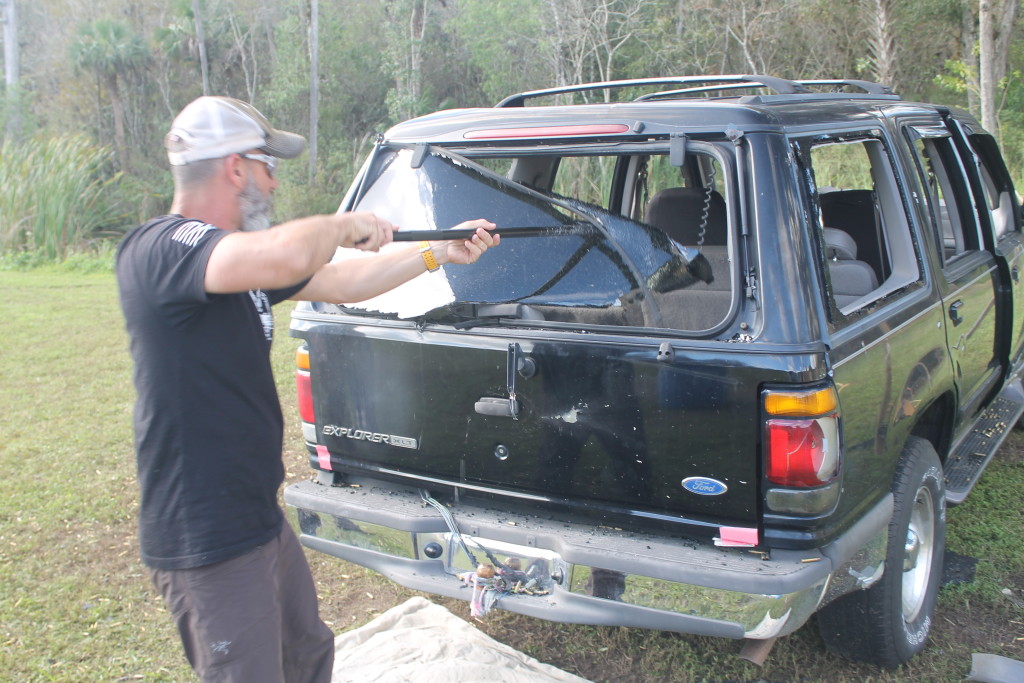
In case of emergency, break glass. This saying is familiar, and the cane can smash out an entire SUV rear window. The best power stroke comes from landing our blow with the heavier curved end. After smashing the glass use the hook to break out the class. This prevents you from pushing through windshield glass with the straight cane end and risk losing the rubber foot when the cane is withdrawn through the safety glass spider web. The overall cane length will enable you to smash and escape through a commercial plate glass window in the event of an active shooter or fire scenario. In that event the hook can even serve as a climbing aid. Your collapsible umbrella won’t cut it.
Mistake 8: Neglecting to Train

Benner believes in simplified “non-horsesh!t” techniques that end or prevent fights. The danger with training all the time with extremely light bamboo or foam canes, he said, is that people believe they can perform lightning speed, rapier-like moves, crossing behind the back in two-hand shifts. Then when they switch to the full weight metal cane, the speed and balance are unfamiliar, requiring additional grip strength to execute. Benner once had dinner with the late Col. Rex Applegate, author of the manual on knife fighting. In his advanced age, Applegate is reported to have used a cane to put down two street toughs, one with a groin strike and one with a blow to the head.
Mistake 9: Believing the Weapon-Free Zone Myth

Law-abiding citizens have a blind spot. When traveling through non-permissive environments, don’t let your guard down. Just because you comply with the law by leaving behind your $200 blade doesn’t mean the guy asking directions is not concealing a throw-down box cutter. Watch the hands and don’t be lulled into a false sense of security by a sign with a red circle and line around and through a handgun.
Mistake 10: Countering Without Purpose
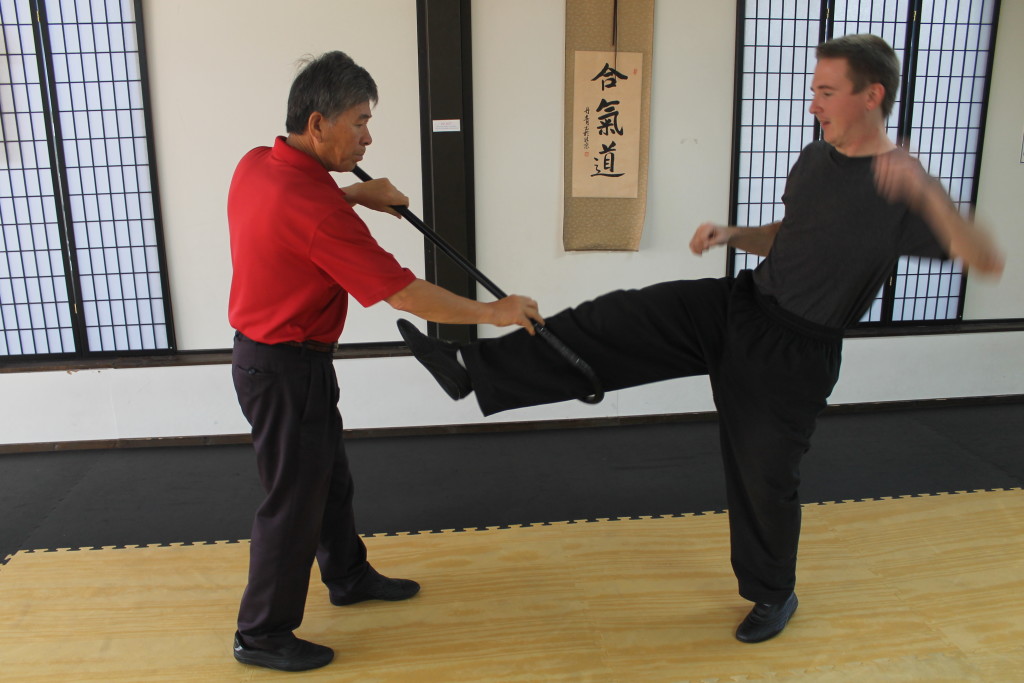
Don’t swing at the entire person. Visualize an attack, be it a front kick to your groin, a sucker punch from behind your head, a grab for your messenger bag. Imagine openings — sensitive areas. Focus your defensive counter (thrust, block, strike) on the opening created by the attacker. If he groin kicks with his right leg can you move to the outside side and deliver a strike to his supporting left knee, avoiding his punch? If he grabs your bag can you drive down the beveled tip of your cane crook handgrip into his arm or neck?
About the Author
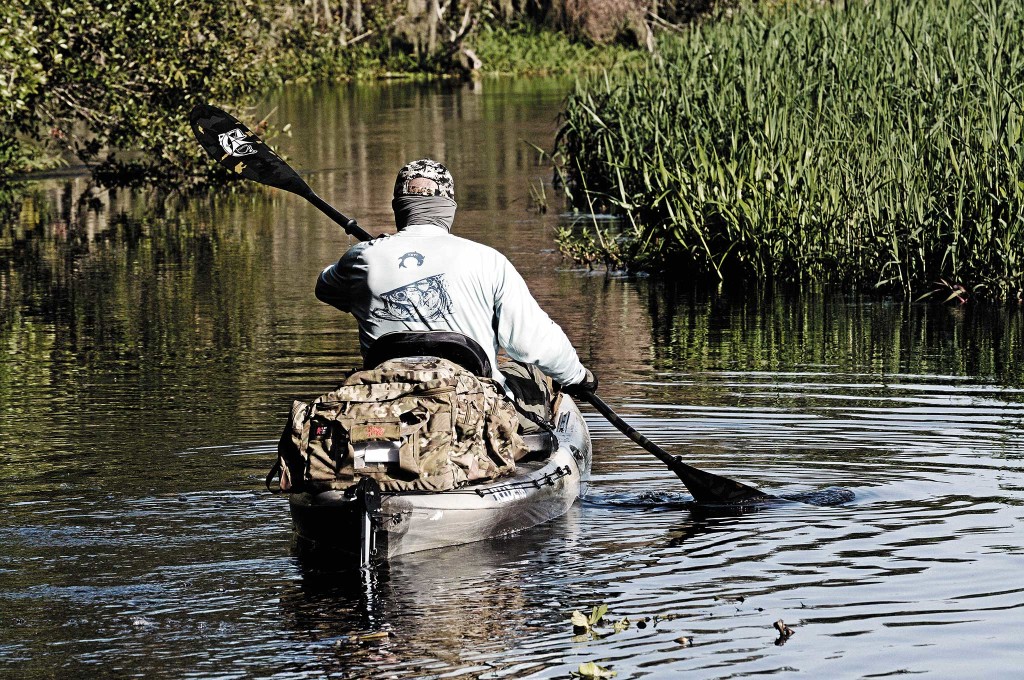
David H. Martin’s family studied three years under Grand Master Sung Cho’s Tae Kwon Do and Hapkido of Sarasota, Florida, earning his black belt together with his son, while traveling for forms and sparring competition. Martin is a professional NRA training counselor, firearms instructor, and Southwest Florida wilderness survival skills kayak/canoe instructor, guide, and outdoor writer. He may be reached via email at davidhmartin@me.com.

